The Sierra Madre Kiwanis Club saluted veterans at its weekly meeting on Tuesday, three days prior to Veteran’s Day. Members of Sierra Madre’s Harry L. Embree VFW Post 3208 were on hand and opened the meeting with a color guard presenting the colors (see video below). Luncheon for the day was “Mess Hall” style and featured pot roast and potatoes, chicken, succotash, navy bean soup and SPAM.
After lunch, all veterans in attendance stood up, introduced themselves and briefly discussed their service, including branch of the service, era in which they served and the location of their service. Veterans that served in wars from World War II through Enduring Freedom were on hand, representing all branches of the service.
Then Ann Luke got up and read a poem called “In Flanders Field,” written during WWI in 1915 by Canadian physician Lt. Col. John McRae after he witnessed the death of his friend, Lieutenant Alexis Helmer, 22 years old, the day before:
In Flanders fields the poppies blow
Between the crosses, row on row,
That mark our place; and in the sky
The larks, still bravely singing, fly
Scarce heard amid the guns below.
We are the Dead. Short days ago
We lived, felt dawn, saw sunset glow,
Loved and were loved, and now we lie,
In Flanders fields.
Take up our quarrel with the foe:
To you from failing hands we throw
The torch; be yours to hold it high.
If ye break faith with us who die
We shall not sleep, though poppies grow
In Flanders fields.
The poppies referred to in the poem grew in Flanders in the earth of the battlefields and cemeteries where war casualties were buried, and subsequently became a symbol of Remembrance Day, which in the U.S. is also known as Veteran’s Day. In keeping with the tradition, poppies were presented to all in attendance at the meeting.
Kiwanis president Susan Henderson then introduced the guest speaker, Sgt. Major Jeffrey Koontz, who spoke about his service in the Army Corps of Engineers, the Corps, and its mission. Sgt. Major Koontz serves in the Los Angeles District, one of the largest districts in the country, encompassing 226,000 square miles in four states, protecting 420 miles of Southern California shoreline from Morro Bay to the Mexican border. Among the Corps’ current missions: flood risk reduction, military construction, emergency operations, engineering design and environmental restoration, including the upcoming renovation of the Los Angeles River.
Surprisingly, the Army Corps of Engineers is comprised of significantly more civilian personnel than service members, according to Sgt. Major Koontz, there are in excess of 800 civilian members of the Corps in the Los Angeles District and only about sixty uniformed members. The USACE website puts the national numbers at approximately 34,600 Civilian and 650 military members.
Sgt. Major Koontz also discussed the Corps’ recent role in the construction of a border wall along the US/Mexico border, its ongoing efforts to maintain and strengthen the 14 ports that are in the Los Angeles District, and its collaboration with the Dept. of Homeland Security and other government agencies to keep the region safe.
- Special decorations for Veteran’s Day
- Kiwanis President Susan Henderson opens the meeting
- Kiwanians, veterans and guests stand to open the meeting
- Chow time
- Part of the special “Mess Hall” menu
- Former Marine Corporal Esther Garcia discusses her service at Camp Pendleton, and that of her husband Jim, also a Marine
- Ann Luke reads “In Flanders Field”
- Sgt. Major Jeffrey Koontz of the US Army Corps of Engineer, LA District
- Sgt. Major Jeffrey Koontz of the US Army Corps of Engineer, LA District
- Sgt. Major Jeffrey Koontz of the US Army Corps of Engineer, LA District
- Sgt. Major Koontz receives a “token” gift from Kiwanis Pres. Susan Henderson

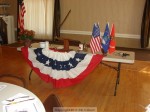
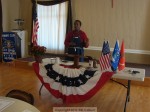
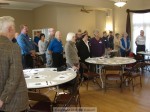
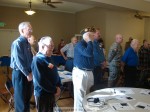
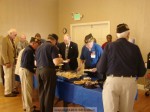

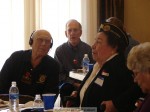
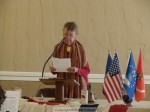
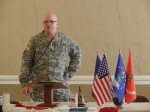
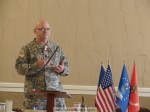
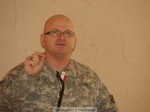
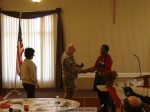
Hi, Bill. Thank you so much for your excellent coverage of the Kiwanis Veterans program. I was honored to be a part of it.
Ann Luke
My pleasure Ann.